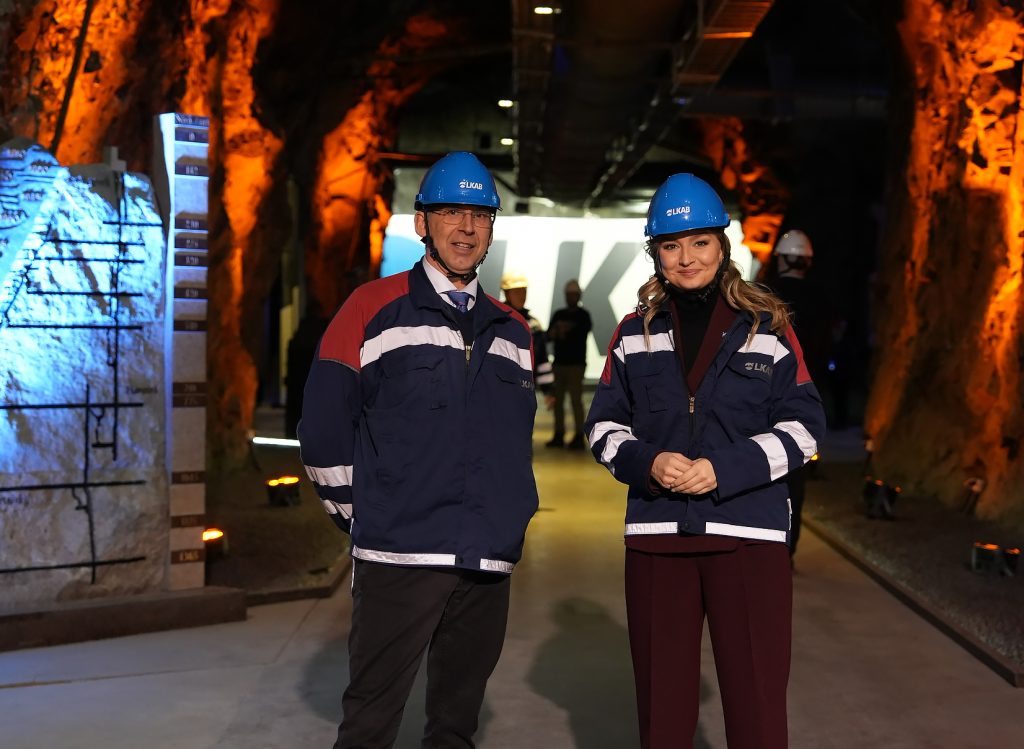LKAB reports largest known Rare Earth deposit of its kind in Europe

Swedish industrial metal giant LKAB is reporting the discovery of Europe’s largest known deposit of rare earth metals in the Kiruna area of northern Sweden.
Following successful exploration, LKAB said it has outlined mineral resources of rare earth metals exceeding one million tonnes, making it the largest known deposit of its kind in Europe.
LKAB is an international mining and minerals group which accounts for 80% of Europe’s iron ore production. The Per Gijer rare earths deposit is located in close proximity to existing operations at the company’s Kuran mine.
The term rare earth refers to a group of 17 elements that are used to make a range of products and infrastructure that are essential to everyday life, including electric vehicles and wind turbines.
Rare earths elements with tongue-twisting names like neodymium, promethium, and dysprosium are also key to the production of military equipment and high-tech consumer electronics. They fall into two sub-groups: light and heavy, with the heavies being scarcer.
“This is good news, not only for LKAB, the region and the Swedish people, but also for Europe and the climate,’’ said LKAB President and Group CEO Jan Mostrom. “This is the largest known deposit of rare earths in our part of the world, and it could become a significant building block for producing the critical raw materials that are absolutely crucial to enable the green transition,” he said.
Since the U.S. relies on China, the dominant global supplier, for about 80% of its rare earths imports, security of supply became an issue at the beginning of the last decade when China imposed export restrictions, a move that sparked renewed investor interest in the sector.
China has dominated the rare earths industry for 30 years and there is little indication that this will change any time soon, industry officials say. Now, with a dramatic increase in demand for rare earth magnets needed to drive electric transportation and produce clean energy solutions, the industrial world remains exposed to Chinese dominance.
No rare earth elements are currently mined in Europe, which like the United States, is dependent on imports for these minerals.
It means there is a big opportunity for a company like LKAB. According to the European Commission’s assessment, the demand for rare earth elements for electric cars and wind turbines, among others, is expected to increase more than fivefold by 2030.
Meanwhile, LKAB said the road to possible mining of the [rare earths] deposit is long. It said the first step is an application for an exploitation concession for the Per Geijer deposit. It said this is needed to conduct additional exploration at depth and investigate the conditions for mining.
“The plan is to be able to submit an application for an exploitation concession in 2023,’’ the company said.
The rare earth elements in Per Geijer occur together with phosphorus in the mineral apatite, in what is mainly an iron ore deposit. As a result, the rare earths may be produced as by-products.
LKAB has already started to prepare a drift, several kilometres long, at a depth of approximately 700 metres in the existing Kiruna mine towards the new deposit in order to be able to investigate it at depth and in detail.
“If we look at how other permit processes have worked within our industry, it will be at least 10 to 15 years before we can actually begin mining and deliver raw materials to the market,’’ said Mostrom.
